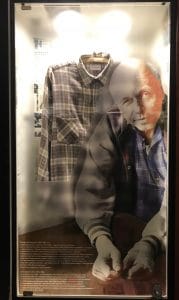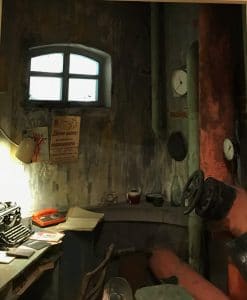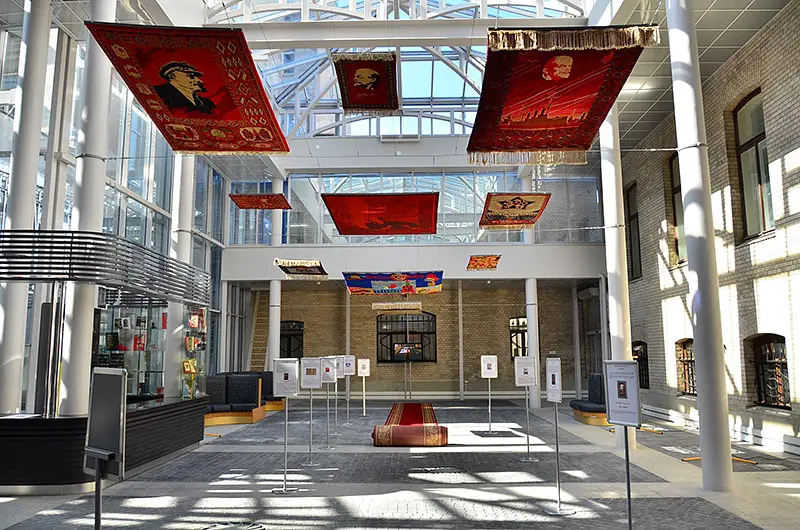Centrally located in St. Petersburg, the State Museum of Political History of Russia examines Russia’s tumultuous political history. It does so in a way that is both modern and quite balanced. Exhibits in the main building are shown in an attractive, recently-renovated tsarist-era mansion with modern technology and artful multimedia presentations. Exhibits give a wide view of not only how Russia has changed over the past hundred and fifty years, but also a fair view of why those changes happened and how they affected life in Russia – for better or worse.

The museum is spread over multiple sites, each with its own hours and ticket prices. The main building, at 2-4 Kuibysheva Street, is the central focus and is within walking distance of the Peter and Paul Fortress and the Hermitage. It’s also priced surprisingly accessibly. An adult ticket may be purchased for 250 rubles. That’s currently just a little under $4 (and, while the English-language site doesn’t say so, your Russian student ID as an SRAS student will get in for just 50 rubles). Check the site for current hours.
Accessibility is also widenend by the newly created audio guides, available in English, German, French, Spanish, Italian, and Chinese for another 250 rubles. Further, even if you aren’t coming to Russia anytime soon, you can now take a fully online, virtual tour.
Be sure to get a map of the museum to ensure you don’t miss any of the exhibits that cover the decline of the Romanov dynasty, the Russian Revolution and the subsequent seven decades of Soviet rule, as well as the transition to a post-Soviet state.
You will first enter a room that covers the 19th and early 20th centuries. Here, exhibits showcase the problems that plagued the declining Russian empire in its last years. Many of the voices that called for reform are heard here, from Minister Sergei Witte to the variety of radicals, anarchists, and terrorists who advocated quick and complete systemic change within Russia. These are generally shown as opposed by the imperial leadership that was incapable of or unwilling to adequately politically and economically modernize the country. In this way, the need for change is shown as widely recognized at the time, and the visitor is left with a feeling that a more sufficient reform effort could have saved the Empire.
Once you are done with the first room you have a few options as to which direction to take, all of which are worth your time. Going to the left, you will enter a few rooms covering the different periods of Soviet history under the handful of leaders of the U.S.S.R. Exhibits discuss topics such as the Cold War or the various transitions of power between soviet leaders, alongside numerous items showcasing repression in the Soviet Union, from forced labor to deportations to executions. On a more positive front, there are also exhibits covering sports, recreation, tourism, and even recreations of apartments and other living quarters to provide a look into the life of Soviet citizens.

Further along is a space for temporary exhibits. One exhibit (now departed), showed the unique role women played in the revolution – as thinkers, soldiers, protestors, and workers. The exhibit explains how the revolution impacted women, as the short-lived Russian Republic was one of the first countries in the world to grant women the right to vote (they retained it under the USSR), how women were involved in the subsequent Russian Civil War, and how the revolution changed family life for Russian women – with expanded rights to divorce, increased access to abortion, and liberalized attitudes towards sex.
Going to the right, you’ll see exhibits covering modernization and industrialization during the Imperial period. Prior to the Revolution, Russia was a heavily agrarian society, late to industrialize until far after its western neighbors had. Exhibits show that this meant that Russia became incapable of providing for those within its society and, further, was unable to compete with the rest of Europe, meaning that the First World War would be especially devastating to Russia. This contributed to the growing discontent with the Imperial State and the eventual desire to replace it. At the end of this wing is a unique exhibit entitled “Matilda Kshesinskaya: Fouettes of Fate.” This room dedicated to one of the period’s most famed ballerinas is topical, not only because of recent controversy created by a recent Russian film covering the ballerina’s affair with future Tsar Nicholas II, but the restored mansion that makes up much of the main building was once her home.
The second floor is easy to miss but hosts exhibits focusing exclusively on Russia during and after the Revolution. The rooms dedicated to the Revolutionary Period (1917-1922) are a more recent exhibition, established as part of the centennial anniversary of the Russian Revolution just last year, the subsequent Russian Civil War, and the emergence of the first Socialist state. The rest of the floor deals with major events from the Revolution onwards, from the Second World War to the human rights abuses and eventual collapse of the Soviet Union and the transition to the current Russian state.

Finally, a small exhibit to covers the brief period of post-Soviet Russia. The transition is shown as a massively chaotic event, inflicting a significant amount of trauma upon Russian society. A timeline shown covers the turbulent events of the nineties, television clips showing debates erupting into physical violence, and finally Boris Yeltsin’s resignation speech on New Year’s Eve, 1999 next to Vladimir Putin’s succession speech, in which the now President Putin swears to the Russian people that the stability of the nation and the security of its citizens would be guaranteed. The exhibit is summed up well by the 1990 Aleksandr Solzhenitsyn quote “How can we make Russia a better place to live?” (Как нам обустро́ить Росси́ю?) that hangs over the room.
The museum builds a convincing narrative that helps the visitor to better understand the chaotic history Russia has endured. For a country with a comparatively young political system, better understanding Russia’s history is important as Russia looks to build for the future. In the museum’s newly renovated facilities and modern presentation, it would seem that the Russian state realizes the importance of history as a living entity that continues to affect the present.
The State Museum Of Political History Of Russia
Ulitsa Kuybysheva, 2-4,
Open from 10:00 a.m. to 06:00 p.m. every day except for Thursday
Tickets: 250 (50 with Russian student ID)
Audio Guide: 250






